Days 58 and 59: Babies. Mamas.
If you enjoy getting your entire being sticky by covering it in repeated coatings of pasty, semi-liquid sugar which will promptly solidify on your skin and thereafter mercilessly rip out any hair that had the misfortune to have been in the spot where this tacky sludge was originally applied, you might consider making some petits fours glacés (petty four glah-SAY). These little treasures have the dual condition of being adored by the general populace and abhorred by their creators. The assembly isn’t so esoteric: make a couple of frangipane layers, chill them, sandwich them with some strained and therefore seedless raspberry jam, chill them some more, cut them (perfectly), chill them one more time, then glaze and decorate them. That’s ostensibly easy. The common glaze for these is poured fondant (don’t struggle with it, just say FOND-int; you’re American, and that’s okay), which is essentially sugar with a small amount of water (and sometimes corn syrup) added, and mixed into an opaque and pearl-colored sludge. Said sludge pours beautifully as long as it’s somewhere within the generous temperature range of about 110 to 111 degrees Fahrenheit. Okay, it’s a little more generous than that, but truthfully, not much, and the real kicker is that if you heat it over say 120 degrees, it becomes pretty much useless. Oh, and when it hits the low end of its temperature range, as mentioned, it turns into a kind of diabetic plaster. We were to create twelve identical (a word which many of the members of class seemed to define quite subjectively) petits fours, plate them, and present them to Chef for evaluation. While we worked with partners during the assembly phase, our glazing and decorating was our own. For my miniature crescents, I opted for a pale yellow glaze with (slightly too) pale green adornments, finished with a small section of crystallized violet petal (which are gaining their own special place in my heart). Lovely. And to think: one satisfying bite took merely three days to prepare. Nonetheless, petits fours glacés are the darlings of the pastry world; indeed, those acquaintances of mine with whom they were shared gave me genuine kowtows. In my opinion (which you’re getting anyway), fondant looks very pretty, but it tastes like plain sugar (which is probably due to the fact that it’s plain sugar; I can’t say for sure; I’m not a chemist). To have flavored it with some oil-of-something-or-other – lemon, for example – would probably have been prudent. The marriage of the frangipane’s velvety smoothness and the raspberry jam’s enlivening tartness was presided over by the priest of sugar, who, despite his shallowness, truly made the ceremony what it was. Like I said, lovely. Just sort of a pain in the butt. (Then, most worthy weddings are.)
I like to think that every little one, sweet and/or annoying, is followed at some point by a grande dame whose dignity commands naught but the highest respect of everyone who interacts with her. Whether this tenet holds true in the real world or not, it definitely did in our class. Our particular stroller-pusher was Hungarian, and she goes by the name of dobos torte (if you want to keep it simple, say DOH-bohs tort; if you want to sound more well-informed, try DOH-bohsh; it’s closer). If some old-timer came up to me and said “Sonny, this torte is the reason WWI happened in the first place,” I might have believed him (ignoring the fact that an old-timer using the word “torte” could be somewhat off-putting). An impractically thin layer of moist yellow cake is topped with chocolate buttercream. This is then repeated. It is then repeated again. And again. Once more, and again. One final time, and voilà, we’re not quite done. (And unless you’re actually in
Which was, as usual, totally worth it.



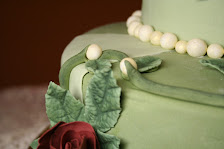

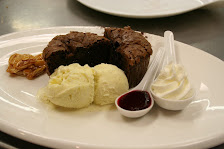
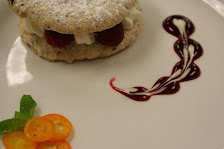
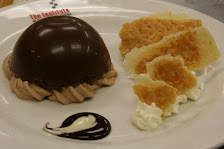
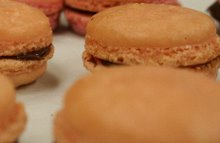
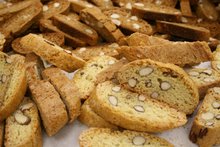




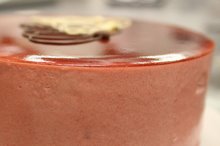



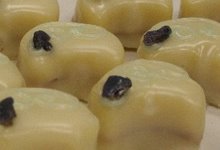
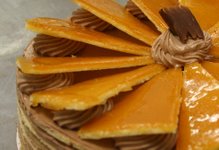



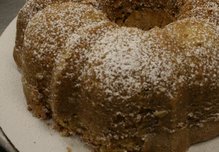
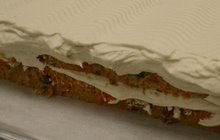


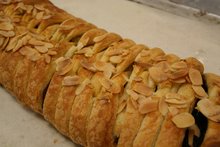






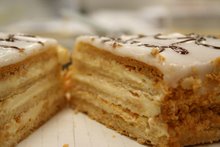
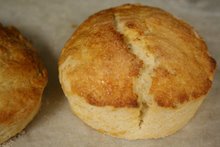


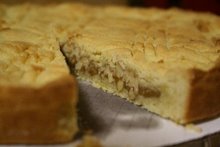












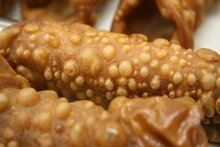


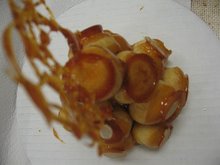
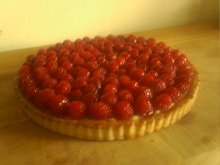


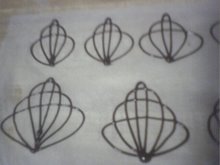


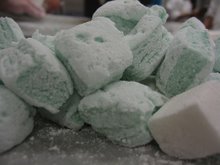

No comments:
Post a Comment